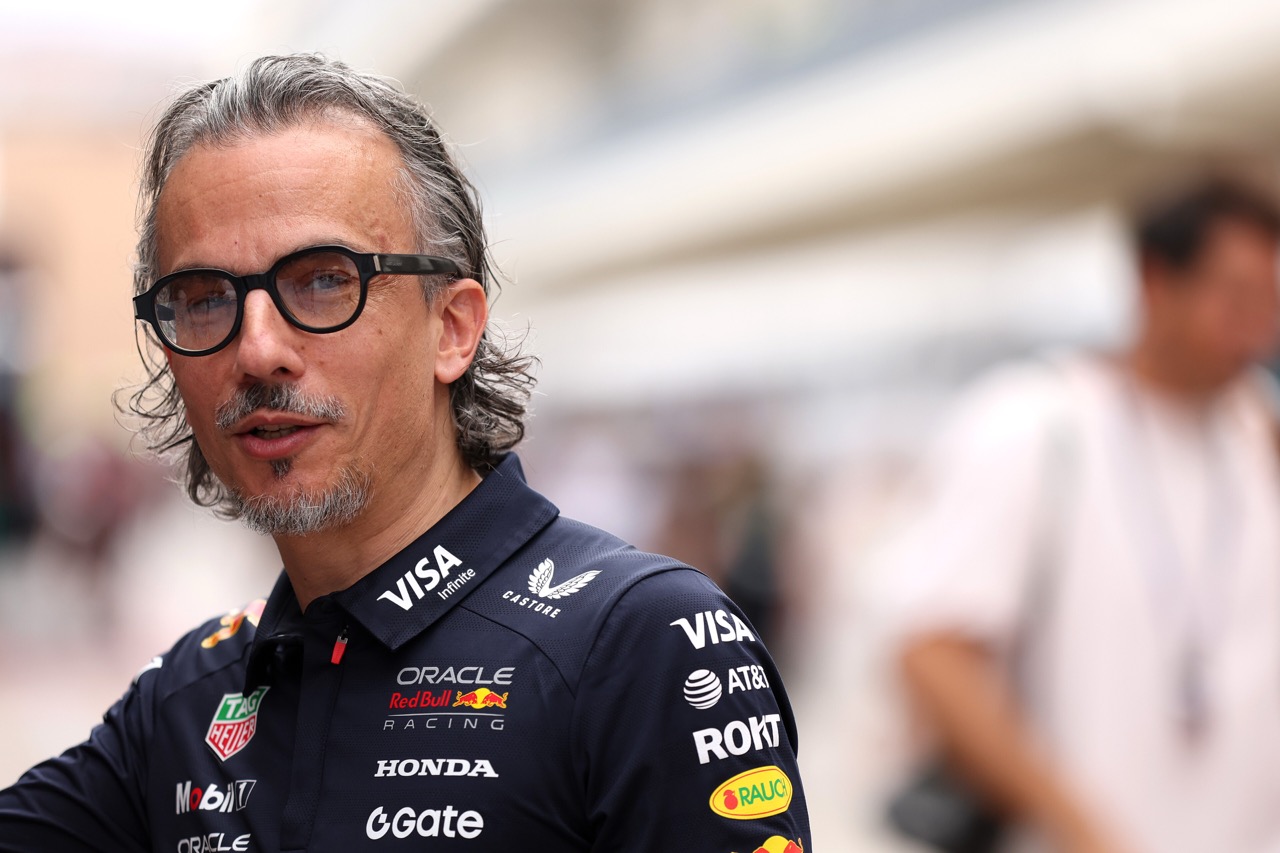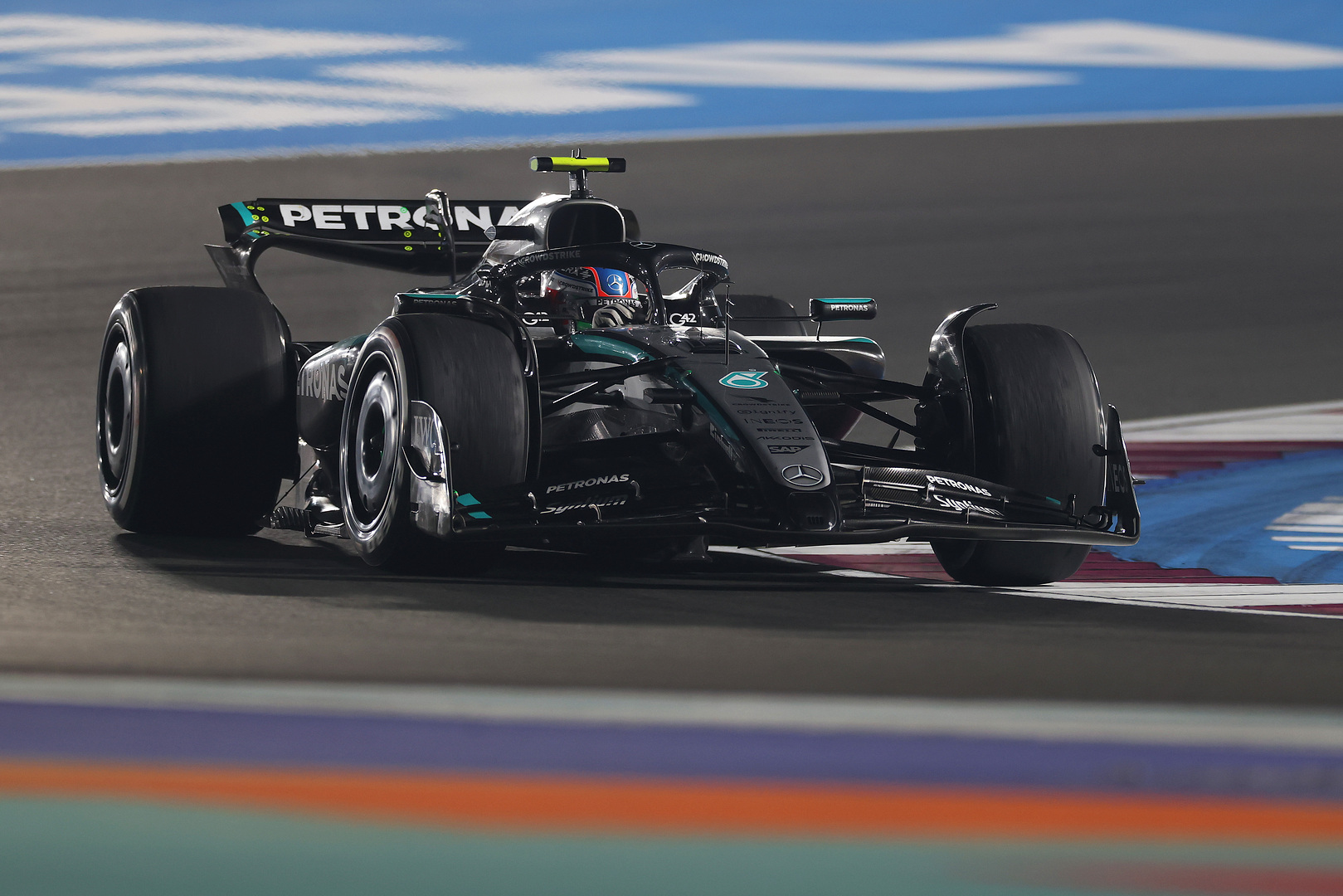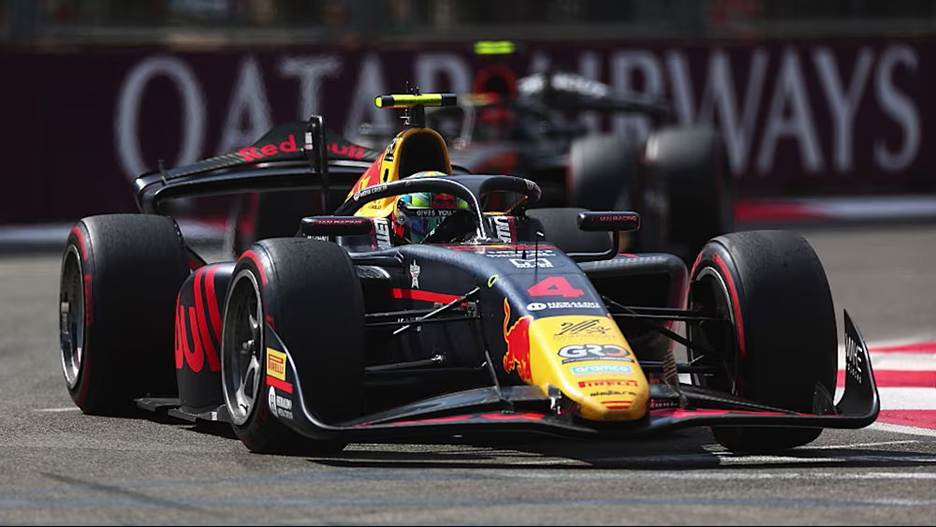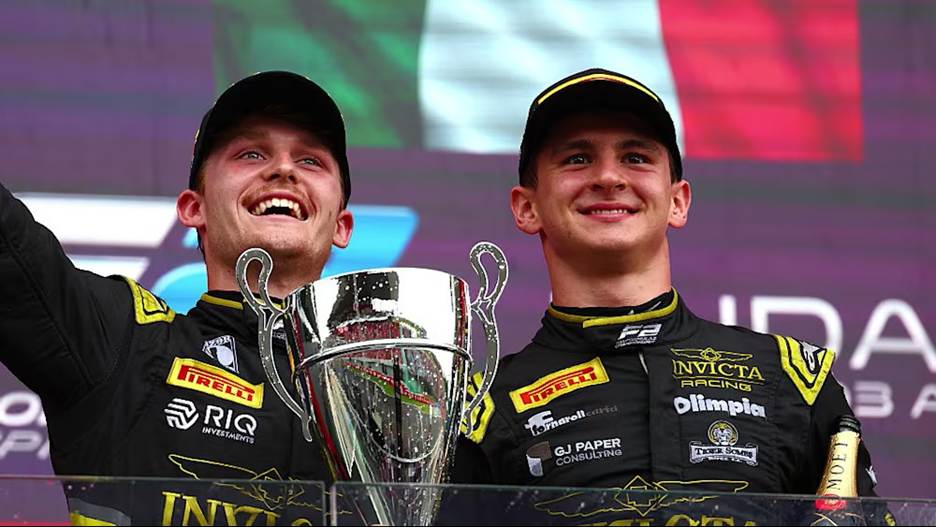Laurent Mekies struck a reflective tone after the F1 US GP, admiring Max Verstappen’s precision and the Red Bull’s constant drive for improvement. He described a unified effort where driver, car, and the team moved in complete sync, each pushing the other forward. Progress, he explained, came through countless refinements rather than one breakthrough. Bold set-up changes and deep data work helped transform the car after the sprint. Despite the narrow margins and pressure from McLaren, Mekies said the feeling within the team was clear — they were witnessing history unfold.
At the US GP, Mekies calls Verstappen’s run a defining chapter in F1
Asked whether we might be witnessing history in the making, Mekies pointed to Verstappen’s relentless progression and remarkable consistency as clear signs. He described Verstappen as a driver who not only delivers on track every time he goes out but also challenges the team between sessions with his precision and feedback. Often picking up on details that aren’t immediately visible. “Watching Max driving is watching history in the making,” Mekies said in his print media session. Acknowledging the growing sense that this isn’t just dominance, but the shaping of a historic chapter in Formula 1.
“I think watching Max driving is watching history in the making. You are using the right words. He surprises us every time he goes out on track, he surprises us on how much he’s pushing us between a session and another, how much sensitivity he has in stuff that sometimes we can see and stuff that we cannot see. So I think watching him is watching history in the making, so it’s a fair point.”
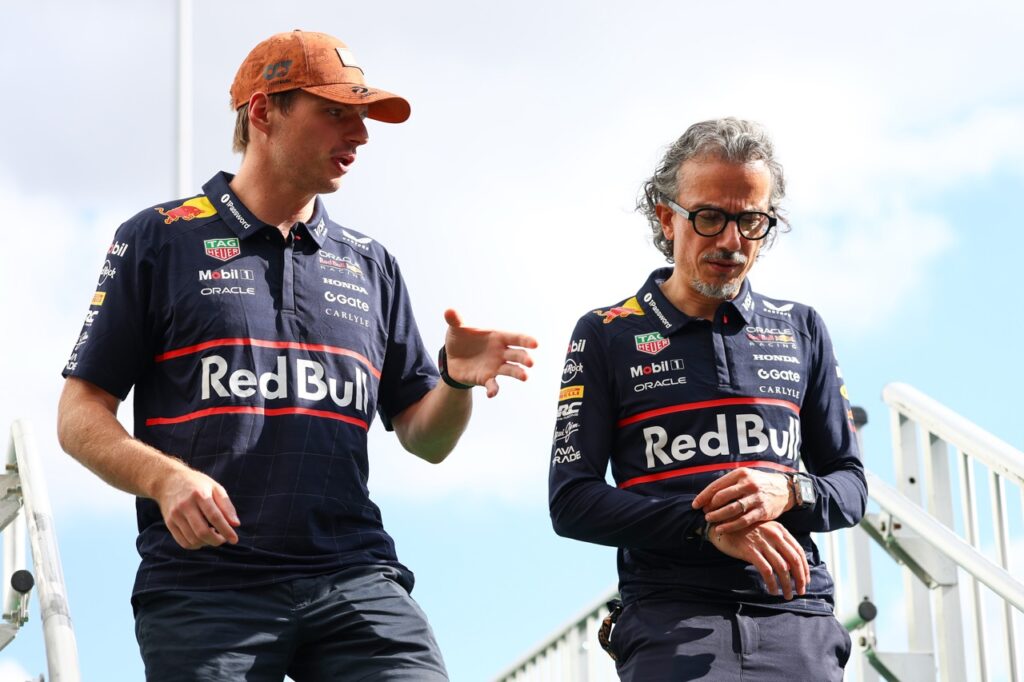
Mekies credits Red Bull’s US GP turnaround in F1 to detail focus and collaboration
Mekies pushed back on the idea that Verstappen alone is the defining factor in Red Bull’s performance, emphasizing the collective effort behind the success. He described the driver, car, and team as a single, unified project. With Verstappen fully embedded in its development, not merely a passenger. While acknowledging that significant ground had been made up since the early season, Mekies was cautious about claiming dominance, noting there’s always room for refinement. “Even on a weekend like today, there will be things we didn’t get fully right,” he said. Underlining the team’s relentless focus on data, internal challenge, and fine-tuning.
“”You know, we don’t separate Max [Verstappen] and the car and the team. It’s one group and as we said, Max [Verstappen] is not sitting outside of the project, watching the project. He’s at the heart of the project. So as we just said, we do not feel we are in a dominant position. But we certainly feel that we have cancelled out a large part of the deficit we had in the first part of the season. And now it’s down to the last details.
“But you know, don’t get me wrong, even on a weekend like today, there will be things we can learn. There will be things that we didn’t get fully right. And that’s where our focus, that’s where our intensity goes. Analysing our data and challenging each other because that’s what we do. And getting the car in the best possible shape for Mexico.”
US GP takeaway shows incremental progress across F1 areas as Mekies highlights collective work
Mekies dismissed the idea that a single factor, such as ride height or the Monza floor, explained the team’s performance gains since the summer break. He argued that attributing progress to one element would have downplayed the extensive analysis work carried out by the team. Engineers identified untapped areas within the car’s performance window and worked meticulously to optimize them. Rather than relying on a single upgrade, they focused on a combination of mechanical and aerodynamic refinements. According to Mekies, it was this comprehensive effort and strategic placement of the car within its ideal set-up window that ultimately boosted their performance.
“I will certainly not be able to pinpoint one single element such as one upgrade or one set of items. I think it will be largely minimising the amazing analysis job that has been done to try to identify where were the untapped area of the performance window of the car and the effort to put the car in these areas and to see if it was going to perform. And it’s not a combination of one factor, it’s a combination of many, many factors.
“We don’t have a big incentive to explain to anyone what it is, but it’s a combination of all that. And of course, every hundredth counts and the Monza floor helped and every single small detail on the car helps, whether it is mechanically or aerodynamically. And this together with that extensive exploration of where to put the car has helped us in the performance.”
From sprint frustration to qualifying gains at the US GP in F1 as Mekies credits decisive set-up changes
After a sprint session that left Verstappen dissatisfied with the car’s rear-end behaviour, Red Bull faced mounting pressure. Particularly from George Russell in the early stages. Without a clear benchmark due to McLaren’s first-corner crash, the team had to rely on instinct and data to guide their next steps. Mekies revealed that instead of standing still, the team engaged in intensive analysis and tough internal discussions to understand and resolve the issues. With strong support from the factory, they made set-up changes ahead of qualifying, a move that paid off. According to Mekies, those adjustments unlocked more performance and significantly improved the car’s behaviour compared to the sprint.
“Yeah, you’re right. After the sprint, obviously we got lucky in the sprint with McLaren crashing at turn one. So we didn’t have that reference against them. We’ve seen George [Russell] putting a large amount of pressure on us, especially in the early part of the sprint. Max [Verstappen] not being completely comfortable with the rear of the car quite early in the sprint. So again, another very good example, risk taking and how this team goes racing.
“With the support of everyone at the factory, we had the choice between not doing anything or trying to address it. And again, a lot of many analysis, many difficult discussions, but ultimately a big learning in making some change, going into quality. It seems we unlocked more performance out of it and certainly today the situation was different compared to the sprint.”
Fine margins at the US GP reveal an ultra-close fight in F1 with Mekies saying McLaren was right there
Mekies acknowledged that the team’s performance may have appeared stronger than it actually was due to McLaren’s early retirement in the sprint. He admitted that, based on race pace, McLaren had been extremely close and likely would have finished near them had Lando Norris not been locked in a prolonged battle with Charles Leclerc. Mekies pointed out that the margins among the top teams were razor-thin, with three or four contenders performing at a very similar level. In such a tightly contested field, he said, delivering in qualifying or the race made the difference. And Verstappen continued to do just that.
“Yeah, I think you’re right. I think you’re right. I think, you know, if you look at the pace, I think McLaren is probably very, very close to us in terms of race pace today. If you consider where they have finished and as you say, the battle Lando [Norris] had with Charles [Leclerc], you would probably have finished very, very close to us. So, you know, it’s what we were saying earlier, you have three or four teams very, very close. And whether he’s nailing it, either in quality or in the races, he’s taking it home.”
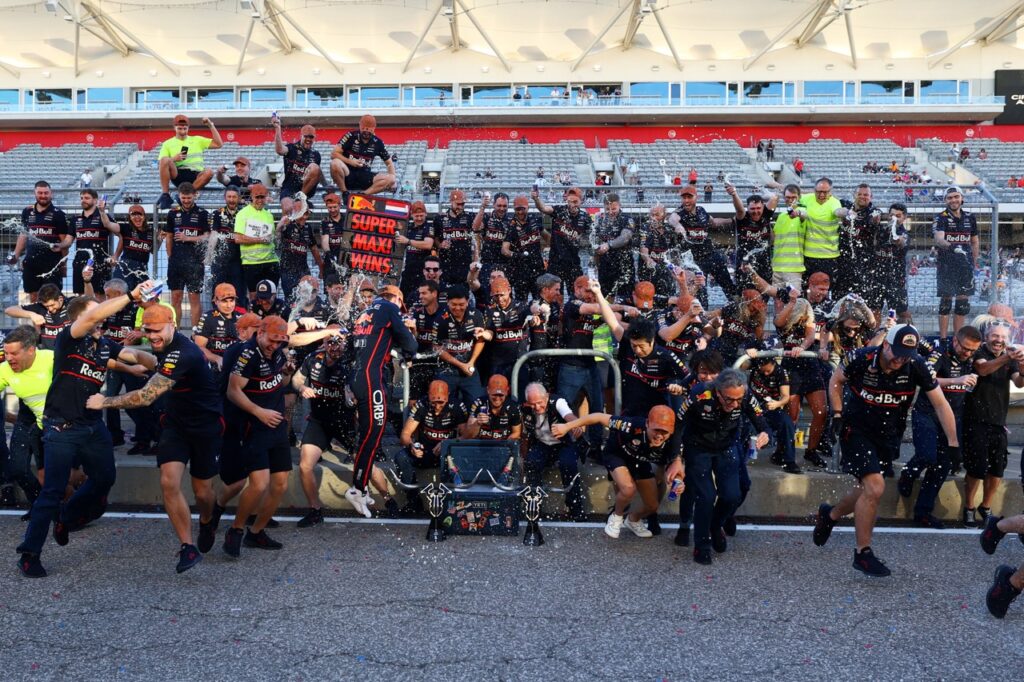
Not a guessing game anymore but the US GP showed F1 balance moves on a tenth and Mekies knows it
While Red Bull’s recent improvements have brought greater consistency, Mekies cautioned that the element of risk hasn’t disappeared entirely. He acknowledged that the team is no longer in the “guessing game” phase Verstappen had previously described, but emphasized how small changes still have a big impact. “If you gain or lose one tenth or a tenth and a half, it’s going to change immensely the equilibrium,” Mekies said. Even with a more stable baseline, experimenting with set-up still carried significant consequences in such a tightly contested field. Meaning, risk remained very much part of the equation.
“Difficult to say. For sure the underlying performance of the car seems to be more consistent than it was a few races ago. So it is true that even when we explore, I guess the amount of lap time you play with is less. However, it’s so tight. If you gain or lose one tenth or a tenth and a half, it’s going to change immensely the equilibrium. So the risk is still there.”

